In the Studio
Nick Cave, Luc Tuymans, and 15 Other Artists on the Tools They Need to Have to Get Work Done in the Studio
From paint brushes and oils, to good light and a working kettle, here's what 17 artists told us.
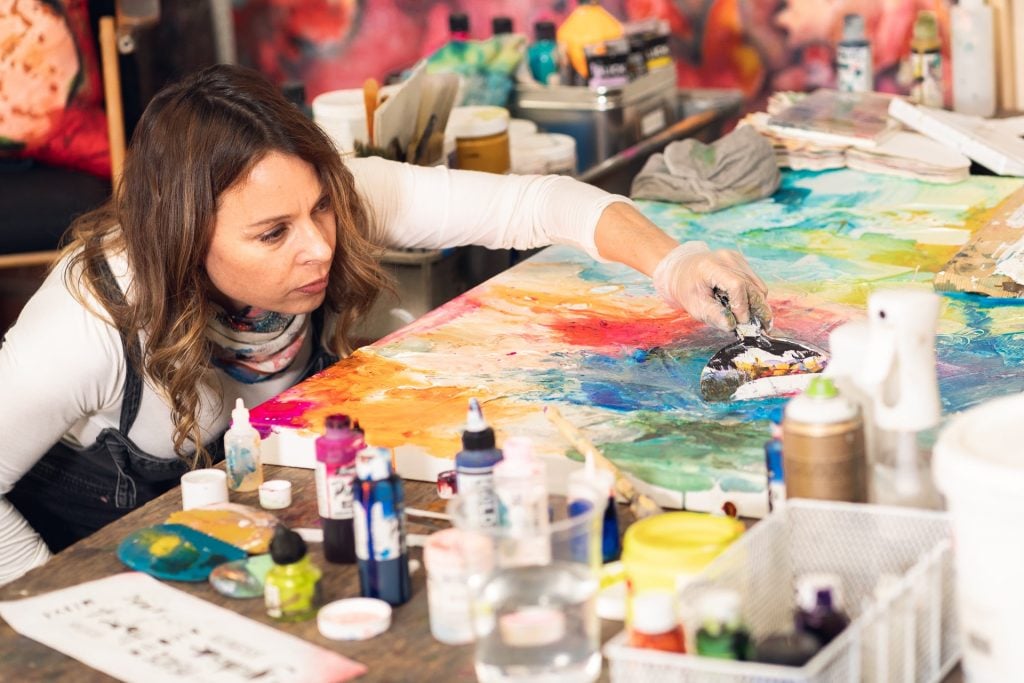
From paint brushes and oils, to good light and a working kettle, here's what 17 artists told us.

Artnet News

As we observe the July 4 holiday in the U.S., we’re going back through our archives to dig out some of our best stories.
This item has been pulled from our ongoing Studio Visit series, in which we ask artists about their working lives. Here’s what 17 of them had to say about the most essential tools in their kits.
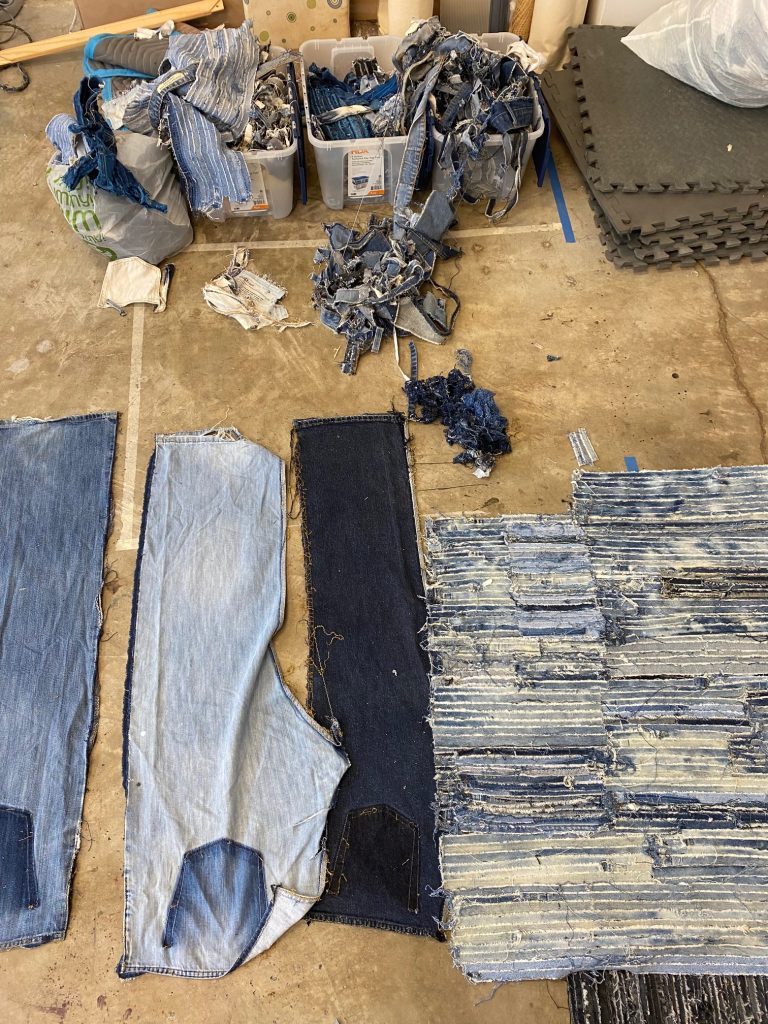
Works in progress in the studio. Courtesy of Jamal Cyrus and PATRON, Chicago.
“At the moment, it’s my charcoal powder and drawing paper. But the most indispensable items constantly change as I work in different media: sculpture, film, sound. Something I always need is my computer as I write a lot.” —Tarik Kiswanson
“The most important items in my studio are painting materials, canvas, and daylight. For obvious reasons.” —Luc Tuymans
“My skylights. I make all my oil paintings from direct observation in natural light. My 6/0 sable brushes are indispensable when making fine detail in both oil and watercolor. A man-shaped tailor’s dummy that I use to pin still life objects to, so they don’t move when I paint them. The platform my husband built for me that keeps me level when painting outside. My extensive leaf collection. A tall wooden painting stool that I inherited from [the late New York City-based painter] Sylvia Sleigh, which is the perfect height and shape for painting.” —Ellen Altfest
“The studio can get chilly, so definitely the radiators! In my previous studios in France, I would have said the space heater, but—knock on wood—I finally moved into an atelier with radiators. What a blessing! Other than that, the tea kettle which goes side-by-side with the coffee pot that my partner gifted to me. I have recently been drinking Belleville Brûlerie, but I’m open for coffee advice from people in Paris. And how could I forget my Berkey water filter, which I brought with me from Los Angeles? You can take the horny surfer out of California, but you won’t separate him from his Berkey.” —Matthew Lutz-Kinoy
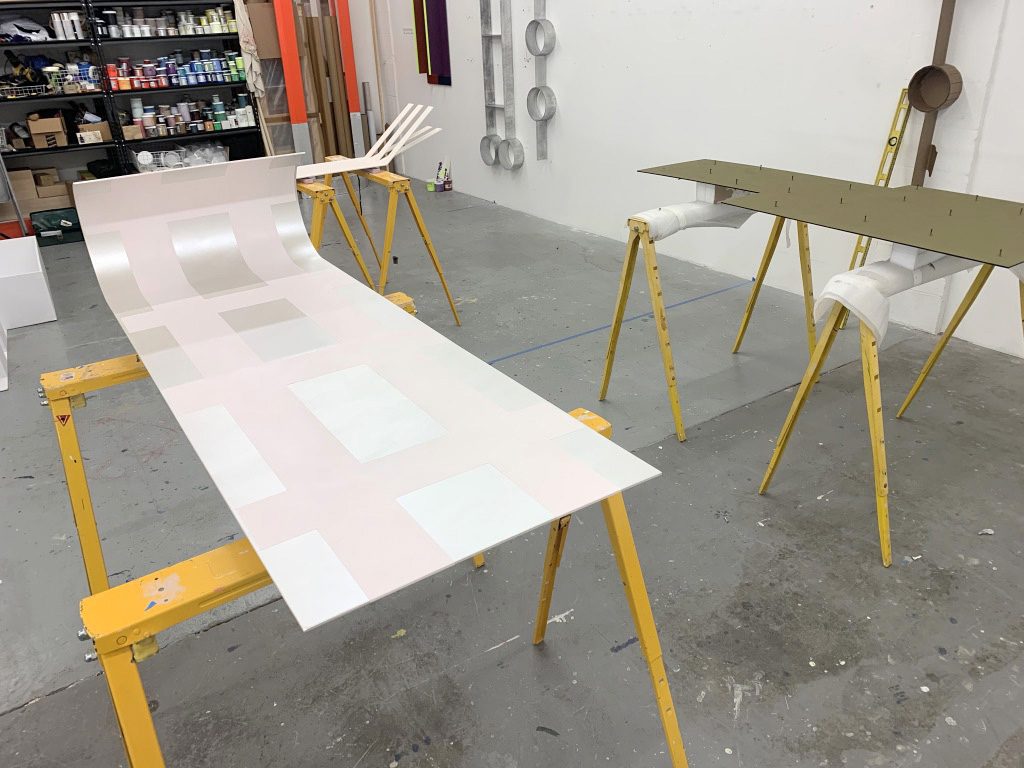
Courtesy the artist and Tanya Bonakdar Gallery, New York / Los Angeles
“My studio wouldn’t feel the same without my Nkisi Nkondi (power figure) who I call Hakeem. It was gifted to me by a family member. He keeps the bad spirits and negative energy out of the studio.” —Alteronce Gumby
“A Sunbeam iron and Golden GAC 200. Right now, I’m working on a set of denim works and those two items are essential to completing them. The GAC 200 I use as a kind of fast-setting glue, and then the iron works to really integrate the glue with the fabric.” —Jamal Cyrus
“My stack of ideas. I keep an alternative sketchbook of sorts next to me at all times to be sure I capture all valuable thoughts for when they are pertinent.” —Nick Cave
“First, electricity, and second, water. Thereafter, a pencil and a pen, 8 1/2 x 11 inch paper, an L ruler, a T square, a tape measure, a step stool, a utility knife, sharp blades, cardboard, tape, sandpaper, gesso, paint, paintbrushes, brush cleaner, a broom, and a dust brush.” —Lisa Williamson
“I think probably my power drill, spatula, sandpaper, and disposable gloves. I use a wide range of materials and techniques depending on the project: from construction material like concrete and stainless steel, to crafting materials like silver, paper clay, as well as conventional sculpture materials likes Jesmonite, plaster, silicone, and resin. However, those items have become a staple and it feels strange not to have them around. I’m also quite specific about them; I’m building my own collection.” —Leelee Chan
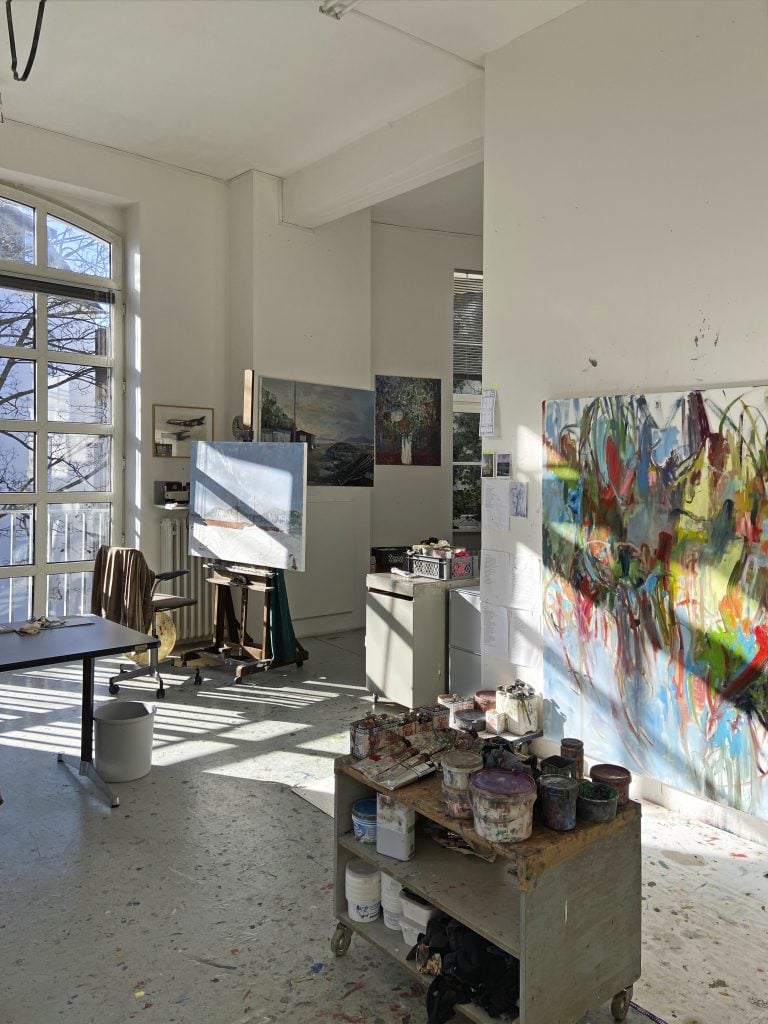
Sabine Moritz studio. Image ©️Studio Sabine Moritz 2021. Courtesy Pilar Corrias Gallery.
“Paint, brushes, canvas, and the view from my window.” —Sabine Moritz
“Indispensable, always: natural light, space, time, work tables, olfa knife, cordless drill, laptop, and a door that closes. Lately: wax pots, wax tools, rigid foam, silicone rubber, paper, ink, my bell machine.” —Davina Semo
“A fountain pen and propelling pencils. Hard drives. My notebook. An RAL color code book. A copy of [the graphics software] Blender 3D 2.82a. Various dongles and adaptors. Monitors of different sizes. Cameras of different resolutions. Piles of undifferentiated material samples. Piles of unsorted papers—for reassurance that there was a past and might be a future.” —Liam Gillick
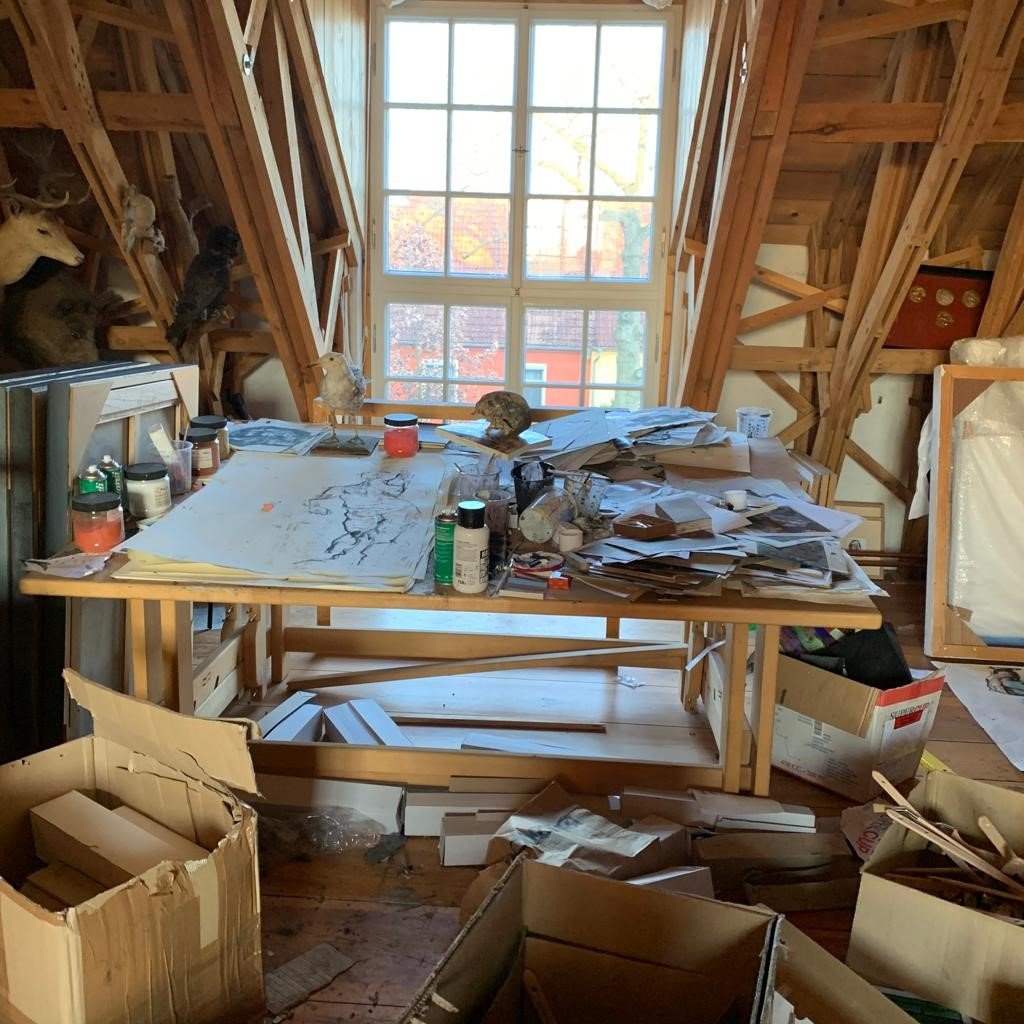
Markus Lüpertz Studio. Courtesy Michael Werner Gallery, New York, London, and Märkisch Wilmersdorf.
“Foremost are my painting tools, a table where I hold my drawings, crayons, brushes, and paints, and a chair so I can step back and look at the work in progress from a distance. Then, natural daylight with northern exposure—just the essentials you need to get to work. I often work on several canvases simultaneously. Our times stymie imagination with media overload, so I don’t have a cell phone—never had.” —Markus Lüpertz
“My books are very important and they are scattered on the floor of my studio. I am always dipping in and out of them throughout the day.” —Shirazeh Houshiary

Portrait of Tarik Kiswanson, 2021. Photo: Béatrice Paquereau.
“For me, the most indispensable items in my studio are acrylic paint, spray paint, paint spatulas, water, my stencils, good light, and music. The materials because this helps me create the different layers in my work. The lighting and music sets the mood and the feeling to immerse myself in the artwork.” —Marisabel Bazan
“The most indispensable items in my studio are fire, gas, and glass. You need all three to make a neon tube.” —Lisa Schulte
“My own archive of paper models and textile samples, which were not selected for various reasons, but are a great source of ideas and shapes. I never start from an empty [sheet of] A4.” —Hella Jongerius